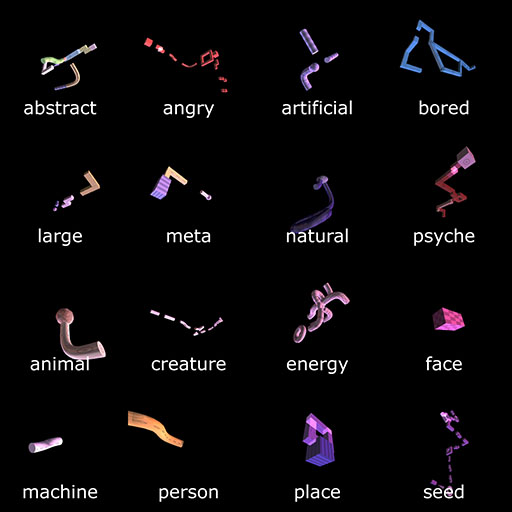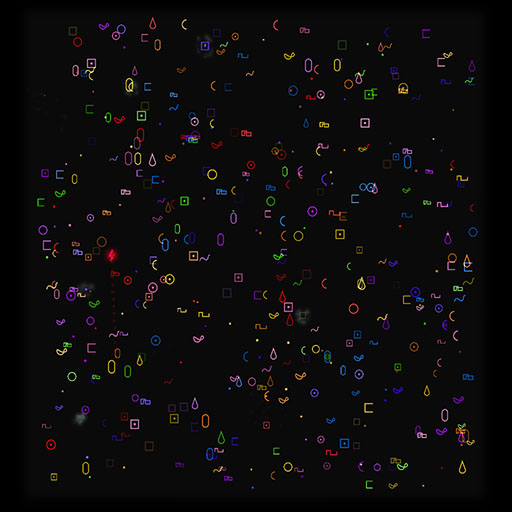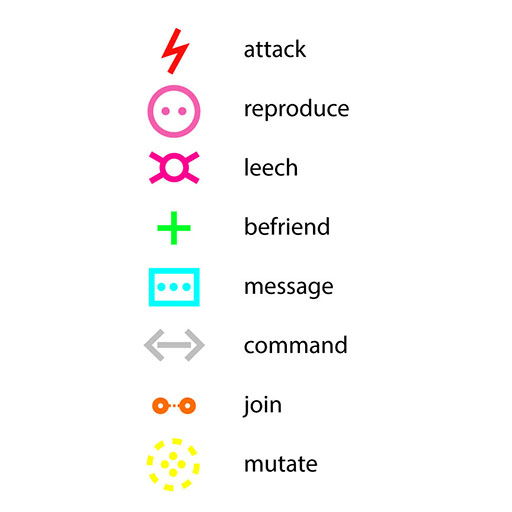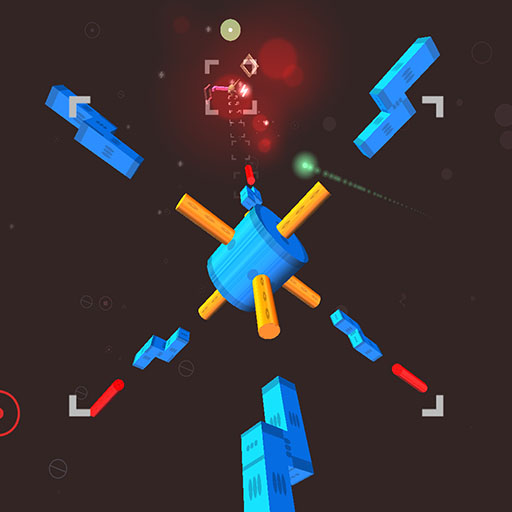eco-system of signs and symbols
Troy Innocent 2004
Software development: Nicholas Sandow, Shee Zon Chen, Leng Hou Tan
Sound system: Jeremy Yuille
Sound design: Steve Law
lifeSigns is part of an investigation of virtual worlds as vehicles for new forms of communication and expression. Working with the idea of the computer as a machine for processing and manipulating symbols, the world manifested in lifeSigns is constructed to evolve multiple digital media languages. This space combines two areas of research - artificial life, the coding of life processes into software and computational semiotics, the study of systems and codes of signification in digital media. The hybrid form that emerges is expressed in terms of the language of electronic space – through form, structure, colour, sound, motion, surface and behaviour.

It explores the flux of meaning and constant reconfiguration of language brought about by new technologies of communication. If electronic signs, such as icons, have agency within the digital realm in which they reside, then how does this change our understanding of information, data, language and communication? What happens when the process of meaning generation is augmented by computational processes?

Each icon has a ‘meaning vector’ that defines its meaning in the world. These come from a list of sixty-four words that describe actions, attributes and structures that are possible in the space. The players may affect these meanings, and the cumulative input of all players is collated to determine the final meaning. This process, combined with the system for generating icons, can be described as a ‘generative meaning system’. It combines the capacity of the computer to generate multiple forms from the same system with the collection of data from human participants to interpret the meaning and significance of the forms generated.

lifeSigns explores the idea of emergent language. The languages generated by the work may be made of familiar shapes and forms, or may result in alternative forms indicative of an ‘alien logic’. The meaning of this space may also shift on another level. It may be seen as a model for the generation of digital media languages, an abstract world of form and colour, a representation of the cosmos, or a simulation of quantum-scale reality.

Icons appear throughout the world. They have been generated by a system of rules that govern features typical of signs, symbols and icons such as symmetry, form, colour and sound. The results of these rules are encoded into a ‘dna string’ that uniquely defines each icon. This also drives their behaviour as they choose to attack, befriend, leech, or mutate one another. They may also send messages or commands. Using a bank of four touch-sensitive buttons, each icon may be performed by the player resulting in the generation of synaesthetic sound and animation. Player input increases the energy of the icon and therefore it’s chance of survival as low energy icons will eventually die in the world. Furthermore, icons with excess energy may reproduce and generate offspring that combine features of their parent icons.

The lifeSigns world is an interactive installation that combines two separate views of the space. A large projection shows a map of this world, accompanied by a generative soundscape. Four workstations placed around the edges of the map enable navigation and play of the world. The space appears to be infinite as the player may continuously navigate and search in any direction – there is no up or down. Although it is a three-dimensional representation there is no horizon line or indication of linear perspective, but instead multiple layers of abstract form, colour and movement.
The production of this project has involved the Victorian game design industry, Film Victoria, ACMI, Monash University and the support of Criterion through utilization of their Renderware graphics engine.